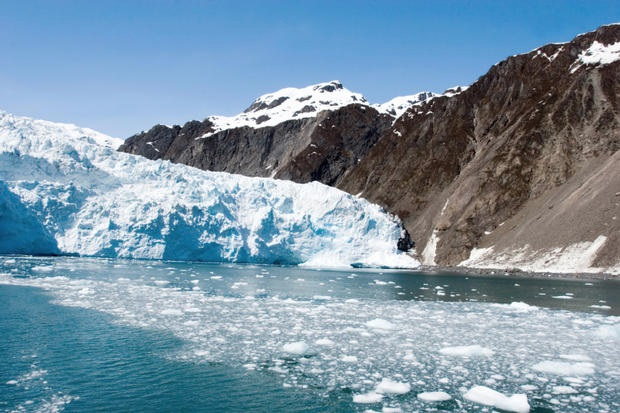Unit 12: Glaciers
Unit 12: Glaciers

Unit 12: Glaciers
 Unit 12: Glaciers
Unit 12: Glaciers
Glaciers are large bodies of ice that form from the accumulation and compaction of snow over long periods of time. They are significant components of Earth's cryosphere—the frozen water part of the planet—and play crucial roles in shaping landscapes, influencing climate, and providing freshwater resources.
Key characteristics of glaciers include:
Formation: Glaciers form in areas where snow accumulation exceeds snowmelt year after year. Over time, the weight of the overlying snow compresses the lower layers into dense ice. This process gradually transforms snow into glacial ice, which flows downhill under its weight.
Types: Glaciers can be classified into two main types based on their location and size:
- Mountain Glaciers: Also known as alpine glaciers, these glaciers form in mountainous regions and flow downslope through valleys. Examples include the glaciers of the Alps, Andes, and Himalayas.
- Continental Ice Sheets: These massive ice sheets cover large land areas, such as Antarctica and Greenland. They are thousands of meters thick and contain the majority of Earth's freshwater in the form of ice.
Movement: Glaciers flow slowly under the influence of gravity, a process known as glacial flow or ice flow. The movement of glaciers can cause erosion, transportation, and deposition of sediment, shaping landforms such as valleys, fjords, moraines, and drumlins.
Features: Glaciers exhibit various features, including crevasses (deep cracks in the ice), seracs (large blocks or columns of ice), icefalls (steep sections of the glacier with chaotic ice formations), and icebergs (large chunks of ice that calve from glaciers into bodies of water).
Erosion: Glaciers are powerful agents of erosion, capable of sculpting valleys, cirques, aretes, and other landforms through processes such as plucking (removal of rock fragments by moving ice) and abrasion (the grinding action of glacial ice against bedrock).
Climate Indicators: Changes in the size and extent of glaciers can provide valuable information about past and present climate conditions. Monitoring glacier mass balance, retreat, and advance helps scientists understand climate change and its impacts on Earth's systems.
Water Supply: Glaciers are important sources of freshwater, particularly in regions where they feed rivers and lakes. They serve as natural reservoirs that release meltwater during warmer months, supporting ecosystems, agriculture, and human communities downstream.
Sea Level Rise: The melting of glaciers and ice sheets contributes to global sea level rise, with implications for coastal communities, infrastructure, and ecosystems worldwide.
Glaciers are dynamic features that respond to changes in climate and environmental conditions. Studying glaciers provides insights into Earth's past climate history, current environmental changes, and potential future impacts of climate change. Protecting and preserving glaciers is essential for maintaining freshwater resources, biodiversity, and the stability of Earth's cryosphere.
Vocabulary
Lesson Reading

